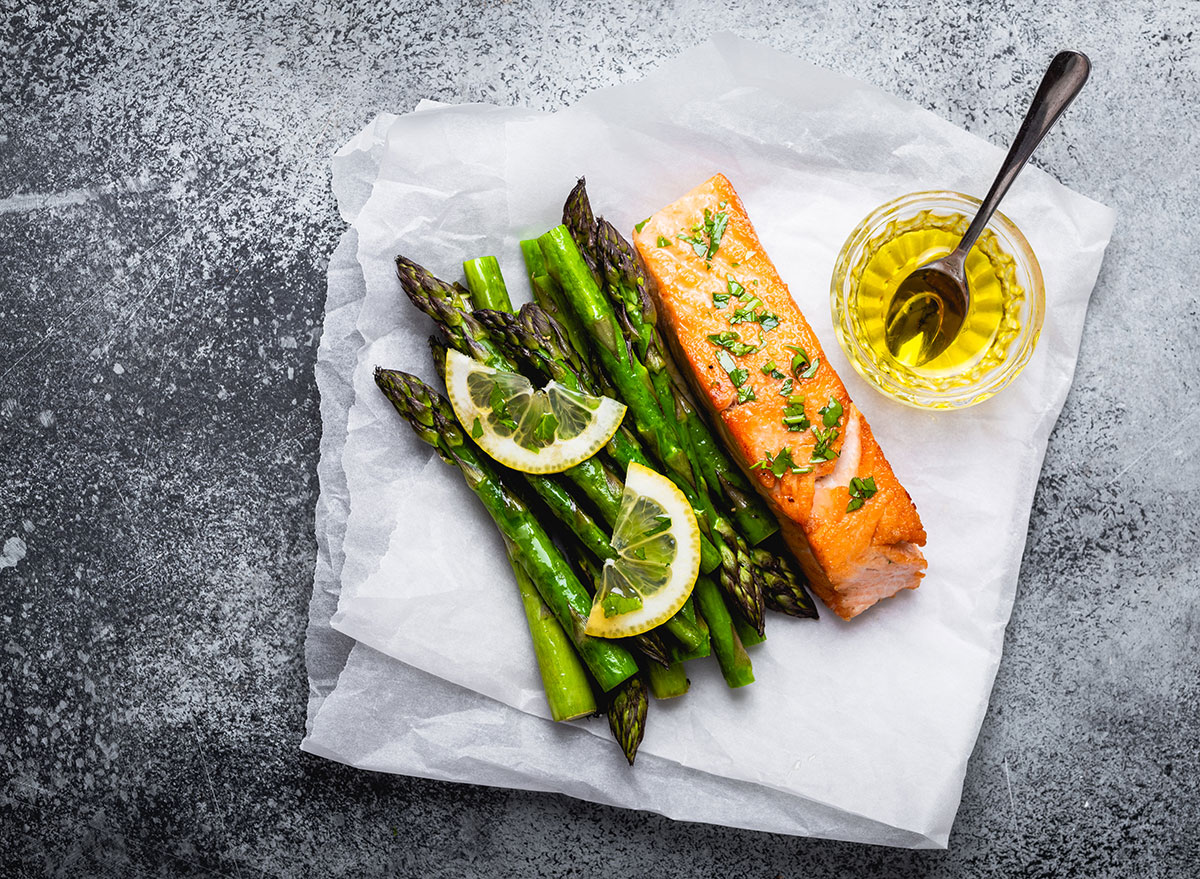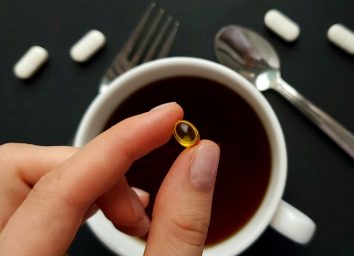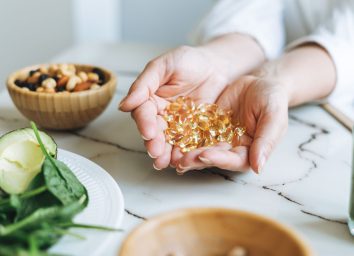This Is The Exact Amount of Vitamin D You Need Now, Says Dietitian

It’s true—standing in the sun on a regular basis can give you all of the vitamin D you need. Unlike other vitamins which are gathered from the diet, vitamin D is synthesized in the skin. It is a crucial vitamin for absorbing calcium in the gut, helping with bone formation and growth, as well as the breakdown and buildup of bone tissues. Plus, vitamin D is even linked to your mood and a stronger immune system. So it brings us to the question—how much do you really need in order to reap these benefits? And should you be taking vitamin D supplements regularly?
In order to get a sufficient amount of vitamin D per day, Amy Goodson, MS, RD, CSSD, LD, author of The Sports Nutrition Playbook and member of our medical expert board, says that you should set a goal of spending 15 to 20 minutes in the sun during the strongest hours (11 a.m. to 2 p.m.) in order to get a sufficient amount of vitamin D on a regular basis.
But what if your current circumstance does not provide you with ample situations to be in the sunlight? Goodson says that you should aim for 800 international units (IU) of vitamin D per day from food, which is equivalent to 20 micrograms.
“Most Americans don’t get enough sunshine on a regular basis, due to indoor working environments, time of year, where they are located in the country, etcetera,” she says. “A large portion of the population is deficient in or has insufficient levels of vitamin D.”
How to get vitamin D from foods
While getting vitamin D from the sun is an easy way to synthesize the vitamin, there are a few foods you can eat in order to get vitamin D as well.
According to Goodson, vitamin D is typically found in the skin and is activated by the sun, so it can be difficult to find sources of vitamin D in food. However, there are a few vitamin D-rich foods you can incorporate regularly into your diet if you’re not able to get enough sunshine throughout the week.
One of the top sources of vitamin D is fatty fish, including salmon, sardines, herring, and canned tuna.

“For example, a 3.5 ounce (100 gram) piece of Atlantic salmon provides 526 IU of vitamin D or 66% of the daily value,” says Goodson. “It is important to note that wild salmon typically has a higher vitamin D amount than farmed salmon, but both do provide it.”
Cod liver oil can also provide vitamin D, as well as an 8-ounce serving of fortified cow’s milk—consisting of around 100 to 130 IU, according to Goodson.
As for plant foods, mushrooms are the only plant-based food that can provide vitamin D. That’s because when the skin of wild mushrooms are exposed to the sun, they can provide up to 2,300 IU per a 3.5-ounce serving—which is 288% of your DV, according to a study from Food and Chemical Toxicology. It is important to note that while it is rare to overdo it on vitamin D, the Dietary Reference Intake does set a tolerable upper limit of 4,000 IU a day.
However, Goodson does point out that mushrooms provide vitamin D2 and not D3, which “while still good for you, vitamin D2 may not always raise vitamin D levels as vitamin D3 does,” she explains.
What about supplements?
While numerous experts say that it’s important to get your vitamins and minerals naturally from food (or in this case, the sun), it can be difficult for some to get the appropriate amount of vitamin D on a daily basis. Choosing a vitamin D supplement that has at least 800 IU a day could be a good place to start, and if you are concerned with the lack of vitamin D you are getting on a daily basis, it’s crucial to also talk to your doctor about choosing if supplementation is right for you.
For even more vitamin D stories, read these next:








